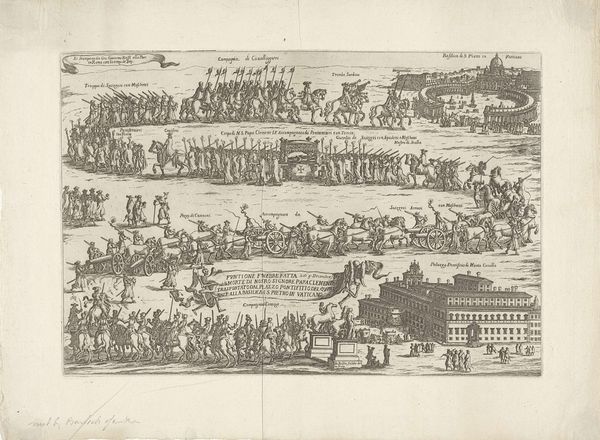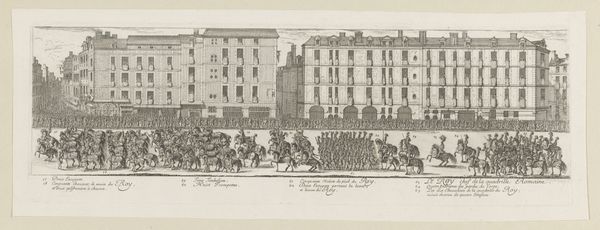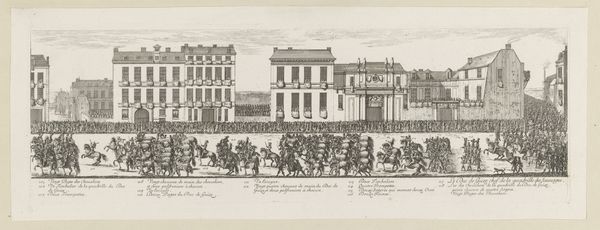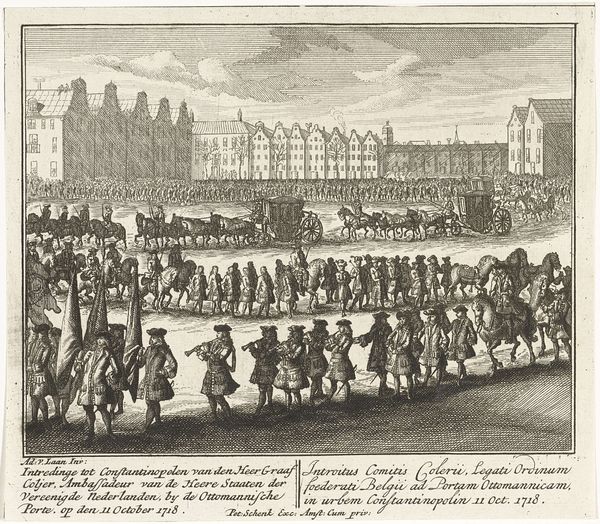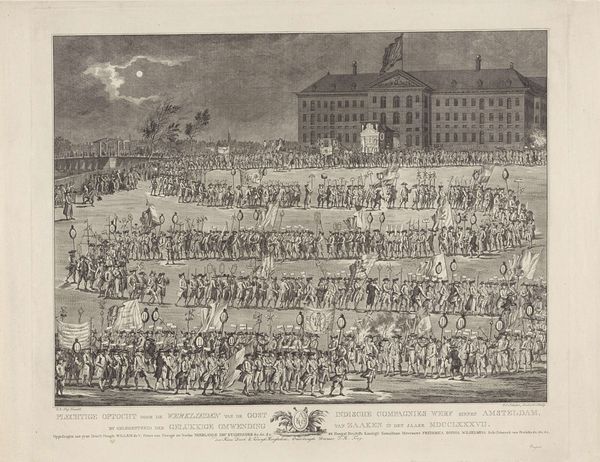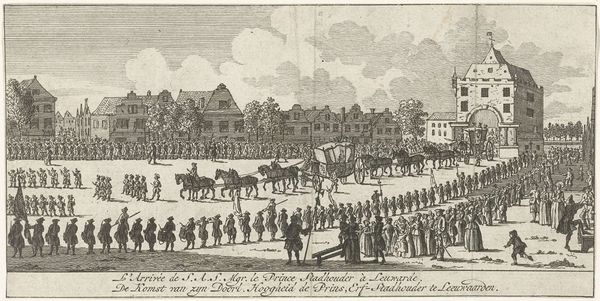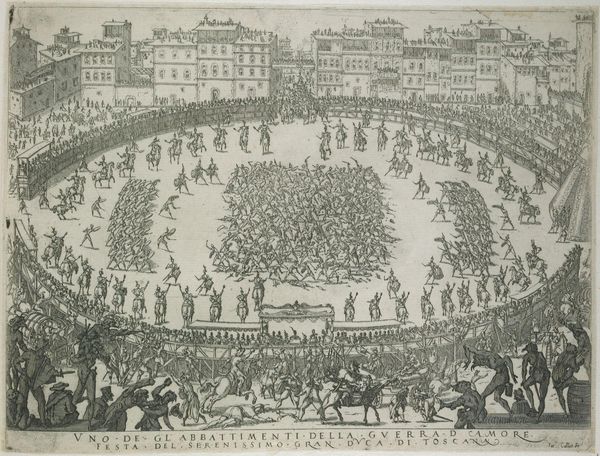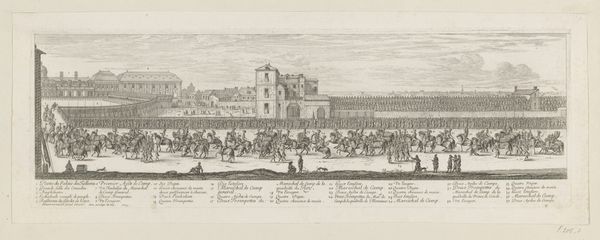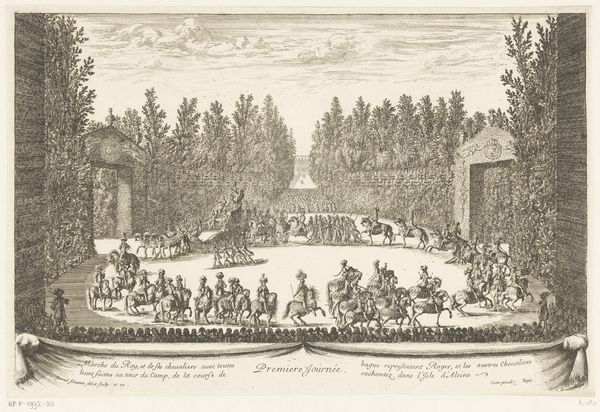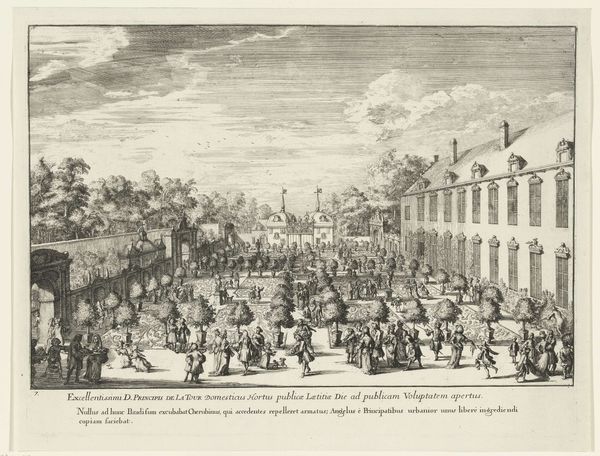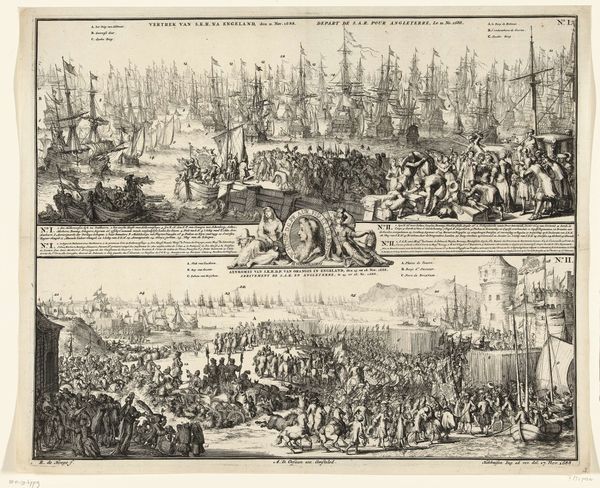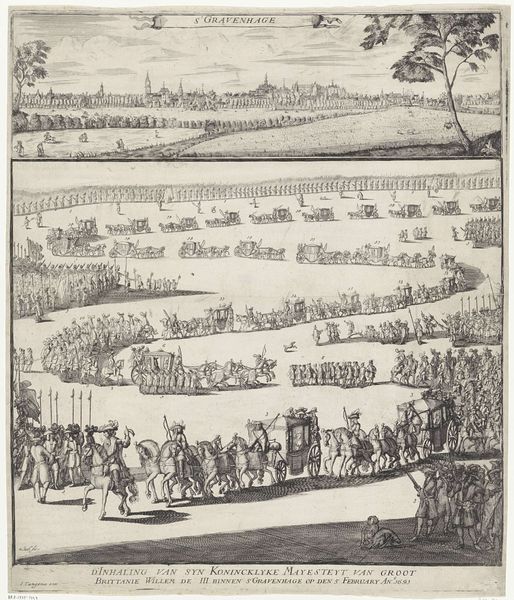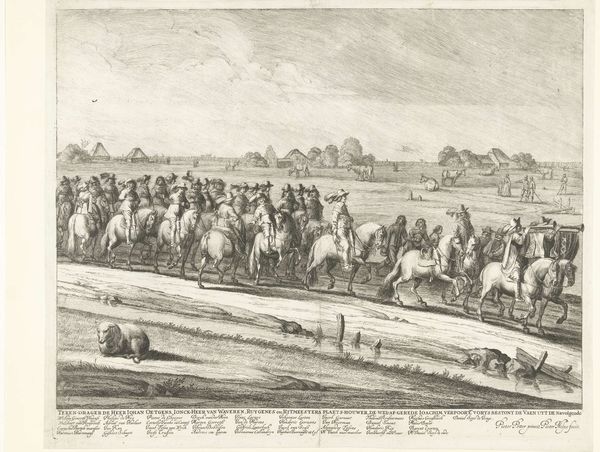
Entry of the Prince of Saxony with his Wife into Dresden on September 2, 1719, after their Marriage in Vienna 1695 - 1705
0:00
0:00
drawing, print, etching
#
drawing
#
baroque
# print
#
etching
#
etching
#
soldier
#
horse
#
men
#
cityscape
#
genre-painting
#
history-painting
Dimensions: Sheet: 6 3/8 x 7 3/16 in. (16.2 x 18.2 cm)
Copyright: Public Domain
Curator: The meticulous detail in Adolf van der Laan's "Entry of the Prince of Saxony with his Wife into Dresden on September 2, 1719, after their Marriage in Vienna" is striking, isn't it? The printmaking technique really lends itself to documenting such a grand procession. Editor: It really is! The way he’s layered the procession gives you a sense of immense scale, especially for a work created with etching. What jumps out to you when you look at the materials and process of this print? Curator: Consider the labor involved in creating this image. Each line, meticulously etched, speaks to the hours spent transferring the grandeur of the event into a reproducible format. This wasn't simply about immortalizing royalty; it was about manufacturing a representation of power for wider consumption. How do you think the act of producing and distributing prints like these changed how people viewed such events? Editor: That’s a really good question! I hadn’t thought about the "manufacturing" aspect. It makes me wonder about the intended audience, the cost of the print, and how readily available it would have been. It wasn't like today’s instantaneous news cycles. It also highlights the socio-economic element, and whether this imagery of the ruling class was to inspire or control? Curator: Exactly! The choice of etching – a process that allowed for multiples – points to a desire to disseminate this image broadly. Think about the workshops involved, the paper production, the distribution networks. It’s not just about the artistry, but about the infrastructure of image production in the early 18th century. Do you see any visual cues of power related to materiality within the procession? Editor: I can see the sheer volume of participants on horseback; the rich clothing and adornments. But knowing that the image itself could be broadly circulated adds another layer. I suppose they’re flaunting access to things, materials. Curator: Yes, the materiality within the artwork reflects and reinforces the material conditions of its production and consumption. Recognizing this relationship allows us to see beyond the simple depiction of a royal event. It’s more about the social and economic implications. Editor: Thanks, I appreciate that new perspective! Looking at the materials and modes of production really opens up a new way to approach the work, moving beyond simply aesthetic interpretation. Curator: Indeed. By investigating these aspects, we uncover how art acts not just as representation, but also as an active participant in shaping the material world and its cultural values.
Comments
No comments
Be the first to comment and join the conversation on the ultimate creative platform.
